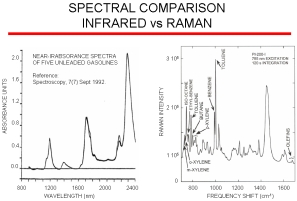Quick Menu
Reduce Octane Giveaway – Increase Profitability
Using Process Instruments Raman technology, one 240,000 bpd Bay-area refinery achieved OCTANE GIVEAWAY savings of $3 million annually
- Raman accurately detects key high-octane contributors
- Benzene
- Toluene
- Iso-octane
- Xylenes
- Reduces
- Reprocessing of batches
- Tankage requirements
- Improves blend performance
Note Raman’s improved spectra resolution
- Aromatics have a stronger spectral response with Raman than many other forms of spectroscopy (e.g., near-infrared spectroscopy [NIR])
- Single, full range octane model can measure all seasonal blends within 0.1 to 0.2 octane units
- Process Instruments guarantees that our Raman octane measurements always meet or exceed ASTM guidelines
- Unlike NIR, Raman is not sensitive to crude slate changes
- No need to develop unique models for different crudes
- Raman is a fundamental phenomenon
- Individual Raman peaks are narrow and discrete
- Eliminates overlapping peaks often seen in NIR spectra
- Raman models can be prepared normally with fewer calibration samples
- Models tend to
- Be more robust (last longer)
- Have improved standard errors of prediction (SEPs)
- Individual Raman peaks are narrow and discrete
- As with our Reid vapor pressure (RVP) modeling, full-range octane models can easily be divided into multiple, smaller sub-blend models that match seasonal and/or geographical blends

